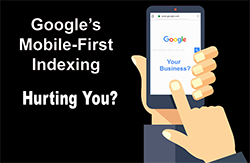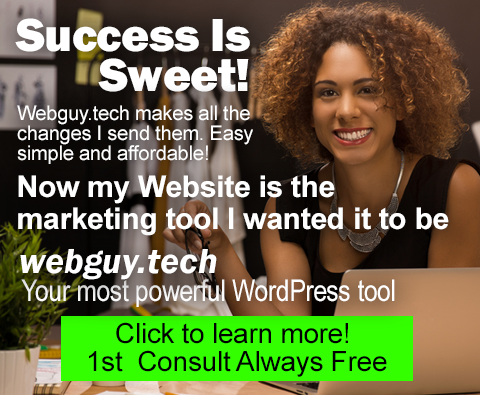Whether you’re looking to launch a new website or improve an existing web design, you’re going to want to know — how much does web design cost? With professional web design prices can range from $1000 to more than $10,000. There are a variety of factors that influence the cost of web design.
More specifically, it’s a matter of how much work is involved. The two determining factors are size and the complexity of your website both relate directly to the price.
That means an attractive, professional 10-page informational website with standard customization is going to cost less than a highly customized 50-page website with all the bells and whistles.
Web Design Pricing: How Much Does A Web Design Cost?
A basic web design for a small business can cost between $1000 to $10,000. That should provide your company with a credible, user-friendly site that can start driving purchases, phone calls, and quote requests specific to your brand and goals.
Searching web designers in our area that listed their prices, we found the going rate in WNC to build a modern, professional small business website was typically $3,000-$6,000. Though again, it depends on the number of pages and the amount of customization needed.
If you’re a small business or startup, a good basic web design offers a cost-effective option. Be prepared to spend between $3,000-$6,000. That means a nice-looking, professional 10-page informational website with standard customization.
WHAT DETERMINES WEB DESIGN PRICING
With such a broad price range for a web design — it’s natural to wonder what determines the cost of web design. The six most influential factors on design costs include: Size, Style, Copywriting, Custom Features, SEO

Website Size
The size of your website plays a significant role in web design pricing.
If you’re looking to create a larger site, you can expect to pay more for web design services. It requires more time and work to develop, build, and launch a big website with advanced capabilities like those needed for e-commerce stores.
In most cases, agencies define the size of your website by the number of pages and the cost scales off of that.
Style
Here is an example; if you’re a luxury jewelry company, you’re probably looking to create a high-end website that conveys not only your brand but also your product or service quality. In comparison, a roofing contractor’s web design may feature a more laidback, yet professional design with a focus on trust.
Custom site layout
Every website starts with a theme or template. Nobody codes a website totally from scratch anymore — that’s way too time-consuming and expensive. A template or theme often gets you 50-60% of the way there, but there’s still tons of customization and coding to get your site looking and functioning how you want it to. The more customization and coding required, the greater the cost. Templates and themes are a major reason you can often build a professional small business website in the $3,000-$6,000 range, instead of $15,000-$20,000 or more as in the past.
No matter what style you’re looking for, from simple to high-end, it’s critical that your web designer creates a website that captures your brand, as well as provides an intuitive and seamless experience for your visitors or shoppers.
Custom images & graphics
Fancy images and graphics can give your site a one-of-a-kind look, but it comes at a price. In addition, sophisticated visual effects often require special editing software and/or custom graphic design work. I can tell you from experience graphic design takes time.
Number of design revisions
Most website projects start with an initial concept design (kind of like a rough draft), then it’s common to have 1 or 2 rounds of design revisions to get everything just right. Technically, a website designer can offer as many rounds of design revisions as they want. But keep in mind, every design iteration adds to the overall cost of the project. In my experience, 99% of the time 1-2 rounds of design revisions are more than enough.
Copywriting
Another big factor that affects your web design cost is copywriting.
Depending on your digital marketing strategy, as well as budget, you may use your web agencies copywriting services for your webpages. If you do, it’s wise to partner with a full-service digital marketing agency like Lone Bird Studio that offers more than just web design services.
What is optimized copy? It’s content that targets keywords relevant to your business and target audience. A full-service agency can provide optimized copy that captures your brand, product features, and unique selling points.
While the cost of copywriting varies, you can expect to pay $100 – $300 per webpage. If you’re an ecommerce store, product pages generally cost around $60 per page — ecommerce product pages have a lower price due to their shorter word count.
Custom Features
Sometimes you can find a plugin that will provide the exact functionality you want right out of the box (i.e. image carousel, membership portal, payment calculator, etc.). Other times, getting your site to do what you want requires significant trial/error and testing. In a perfect world, everything would be plug-and-play and work perfectly the first time — but sadly, that’s rarely the case. A fair amount of debugging and testing could be required to get everything working.
SEO (Search Engine Optimization)
If you’re partnering with a full-service digital marketing company like Lone Bird Studio for your web design, they probably offer SEO services, which you can bundle with web design. The right keywords can make a tremendous difference in your company’s weekly sales and leads. Plus, it’s a key factor to rank in search results. Proper optimization helps your web design budget do more for your business in both the short and long-term.
What does SEO cost? Bundling web design with SEO can increase your web design costs by $2000. The price for this service generally scales off the number of keywords targeted.
Ongoing Website Updates, Upgrades, Maintenance & Licenses
Once your website launches, your work’s not done. Just like buying a house, you’ll need to invest time, effort and money to maintain it.
For example, you’ll have annual hosting & maintenance fees and possibly annual licensing fees for premium plugins and services.
It’s likely you’ll purchase new images as you upgrade and expand your site.
Your site also requires ongoing technical maintenance to install updates and security patches to WordPress core files and WordPress plugins to protect your site from being hacked. Yes, even small business sites are targets for hackers.
If you’re comfortable performing these updates yourself, great. But sometimes routine updates break your site, so you need to know what to do if/when this happens.
You also need an offsite backup system so your website can quickly be restored in the event of catastrophic hardware or software failure (or user error!) crashing your site. Sorry to alarm you, but these things really do happen.
If you prefer not to deal with the messy, behind-the-scenes technical upkeep of your site, you can purchase a website maintenance plan for $40-$300/month depending on the services you need. We recommend www.webguy.tech and their excellent WordPress service
I hope this was helpful in getting an idea of web design pricing and how much a small business website can cost.




